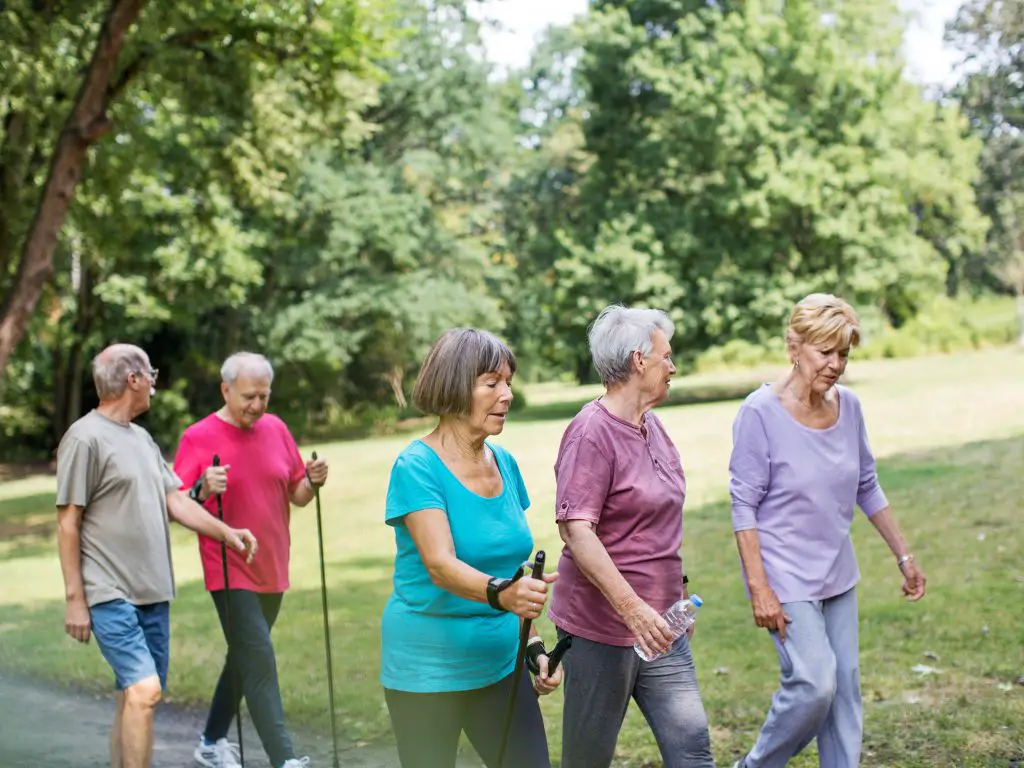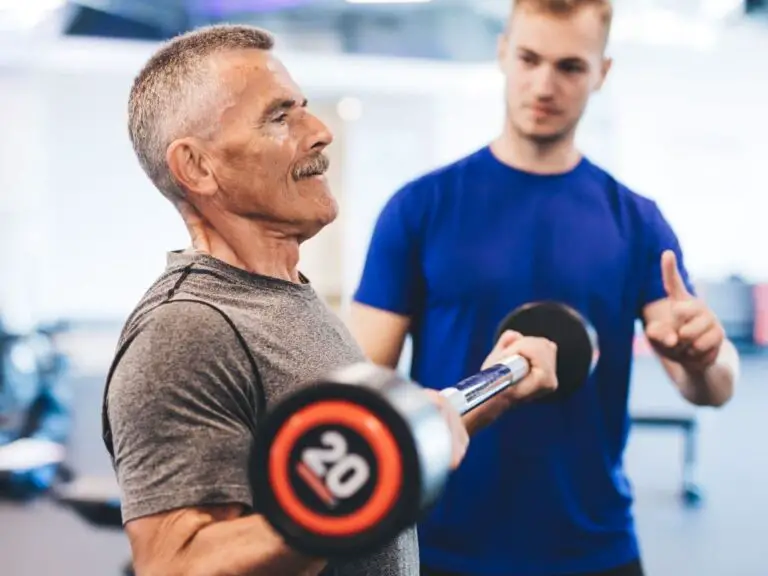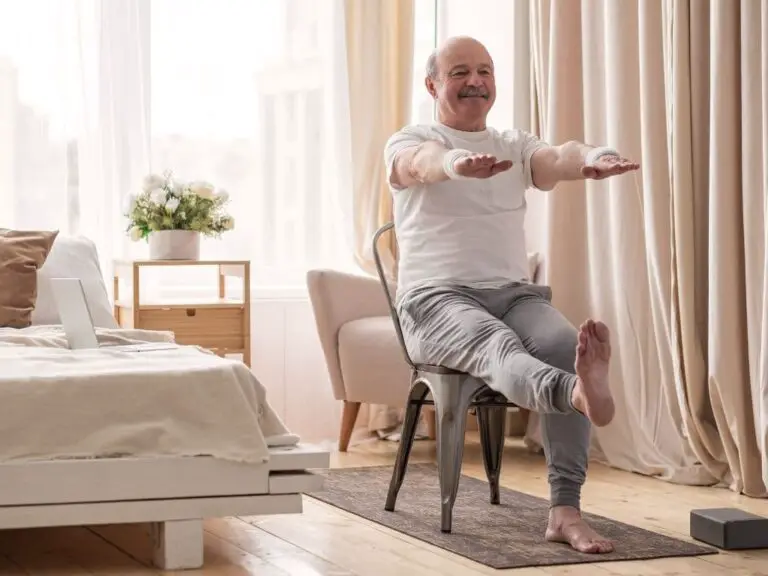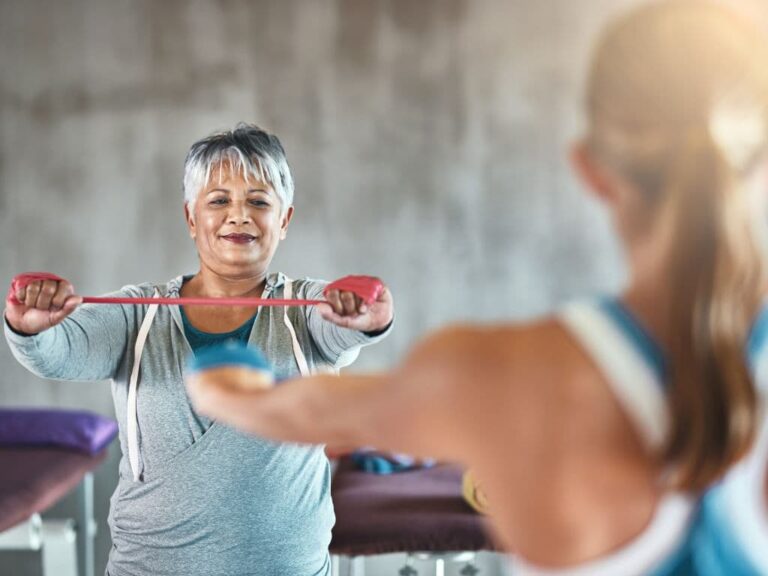Is Walking Enough Exercise for Seniors?
As people age, regular exercise becomes even more important for maintaining health and quality of life. Getting the right amount and types of physical activity can help seniors stay independent and reduce their risk for many chronic diseases and conditions. Walking is an excellent form of aerobic exercise and endurance activity for seniors. But is walking enough on its own? Or should seniors look to incorporate other types of exercise as well?
While walking is a beneficial aerobic activity for seniors, it should not be the only form of exercise. Seniors should aim for at least 150 minutes of brisk walking per week, but also incorporate muscle-strengthening exercises and balance training into their routine to maintain strength, mobility, and reduce risk of falls.

How Much Walking Should Seniors Do Each Week?
The 2018 Physical Activity Guidelines for Americans recommend that seniors get at least 150 minutes per week of moderate-intensity aerobic activity, such as brisk walking. This can be broken up into sessions of 10 minutes or more throughout each day.
For additional health benefits, seniors are encouraged to aim for 300 minutes per week of brisk walking or similar moderate-intensity activity. This helps improve cardiovascular health, diabetes prevention, bone strength, balanceand coordination.
Getting this amount of brisk walking each week has been shown to:
- Lower risk of heart disease, stroke, type 2 diabetes, several cancers and cognitive decline
- Improve blood pressure, blood sugar control and sleep quality
- Strengthen bones, muscles and joints
- Enhance mental health and mood
- Increase energy levels and ability to perform daily activities
Walking at a vigorous-intensity pace, where breathing is more difficult, provides even greater benefits. Seniors who are able should aim for at least 75 minutes per week of vigorous walking.
In addition to aerobic activity, seniors should also do muscle-strengthening exercises at least 2 days per week to maintain strength and mobility. And balance training on most days is key for reducing risk of falls.
How Can Seniors Get Started With Walking?
For seniors who are currently inactive, it’s important to start slow and gradually increase walking duration and intensity. Trying to do too much too soon can lead to injury or cause seniors to get discouraged.
Here are some tips to safely get started:
- Consult your doctor before significantly increasing physical activity, especially if you have chronic health conditions.
- Start by walking just 5-10 minutes at a time and gradually build up.
- Choose a safe, level route with good lighting and handrails if needed.
- Wear supportive, cushioned shoes designed for walking.
- Bring water to stay hydrated.
- Use a cane or walker for stability if needed.
- Pay attention to posture and take rest breaks as needed.
- Walk at an easy, comfortable pace. Over several weeks, pick up speed to reach a brisk pace.
Having a walking buddy or group can provide motivation and social connection. Many community centers and parks offer walking groups specifically for seniors.
How Can Seniors Make Walking More Enjoyable?
To help make walking a sustainable lifelong habit, it’s important to find ways to make it fun and rewarding. Here are some tips:
- Explore interesting new routes in your neighborhood, parks and trails. Vary what you see on your walks.
- Listen to uplifting music or audiobooks.
- Track your progress using a fitness tracker or app with goal-setting.
- Join a walking group to socialize while being active.
- Bring your pet or a friend along for companionship.
- Infuse interval training by alternating walking with periods of faster jogging or running.
- Tackle hilly routes for a greater challenge.
- Stop to enjoy nature, architecture, landmarks, or landscaping along your route.
- End your walk with relaxing stretches or foam rolling.
Making walking an enjoyable lifelong habit is key for seniors to gain the many health and wellness benefits of regular aerobic activity.
What Are the Health Benefits of Walking for Seniors?
Regular walking provides a host of powerful health benefits that become especially important as we age. Consistent walking can help:
- Improve heart health and lower blood pressure, cholesterol and risk of heart disease and stroke
- Reduce risk of developing type 2 diabetes and help manage blood sugar in those with prediabetes or diabetes
- Prevent weight gain and body fat accumulation, especially around the abdomen
- Strengthen bones, reducing risk of osteoporosis and dangerous falls and fractures
- Improve balance, coordination, flexibility and mobility, preventing loss of independence
- Delay cognitive decline, lowering risk of dementia and Alzheimer’s
- Reduce risk of many cancers, including breast, colon, bladder, esophagus, kidney and uterus
- Boost mood and mental health by releasing feel-good endorphins and reducing stress hormones
- Improve sleep quality and allow deeper, more restorative sleep
- Increase energy levels and combat fatigue through improved blood and oxygen circulation
Even for very elderly seniors, starting a regular walking routine can provide meaningful improvements in strength, cardiovascular function and overall well-being.
What Are the Risks of Not Exercising for Seniors?
Lack of regular physical activity poses significant health and safety risks for seniors. Inactivity can:
- Accelerate loss of heart function, raising risks of heart disease, stroke, high blood pressure and mortality
- Worsen symptoms of arthritis and contribute to loss of bone density, strength and balance
- Lead to weight gain and abdominal obesity, increasing risk for diabetes, heart disease and dementia
- Cause muscles to weaken and atrophy, reducing mobility, stability and ability to live independently
- Reduce joint flexibility and range of motion, making everyday activities more difficult
- Impair immune function, making seniors more vulnerable to illnesses and infections
- Increase fatigue, depression, anxiety and isolation
- Lead to poor sleep, irritability, and reduced cognitive function and memory
- Contribute to falls and life-threatening injuries like hip fractures
Even for very frail seniors, some physical activity is better than none. Inactivity can quickly accelerate decline in health and quality of life. Walking and other exercise tailored to ability is vital.
What Are Some Tips for Safe Walking for Seniors?
While walking provides tremendous benefits, seniors also need to take some safety precautions to prevent injury. Useful tips include:
- Use walking aids like canes or walkers if needed for stability. Choose reflective gear for visibility.
- Wear appropriate, supportive footwear with good traction and fit. Replace worn shoes regularly.
- Choose routes with smooth, flat terrain and avoid cracked or uneven sidewalks.
- Be cautious walking when icy, wet or excessively hot/humid which increases fall risk.
- Pay attention to surroundings and potential hazards like branches, puddles and pets.
- Bring a phone or safety whistle in case of emergencies. Share route details with someone.
- Stay hydrated by drinking water before, during and after walking.
- Apply sunscreen and wear a hat for sun protection.
- Start slowly after illnesses and adjust pace for health conditions like heart problems.
- Cool down with gentler walking and stretches after brisk walking.
Being attentive and walking defensively can help seniors stay safe while being physically active outdoors.
What Are Some Other Types of Exercise That Are Good for Seniors?
While walking provides the foundation, seniors gain further benefits by incorporating other activities for a well-rounded fitness routine. Additional recommended options include:
Muscle-strengthening exercises using resistance bands, weights or bodyweight at least 2 days per week. This builds power, strength and stability for daily tasks.
Flexibility exercises like yoga, tai chi or Pilates performed at least 2 days per week to maintain range of motion and prevent injury.
Balance training by standing on one foot, walking heel to toe, or using a wobble board helps prevent falls and improves posture and coordination.
Swimming and aquatic exercise allows cardio conditioning with less joint impact. Water provides natural resistance.
Dancing provides aerobic, strength, flexibility and balance benefits in a social, engaging way.
Chair aerobics or modified exercises allow seniors with limited mobility to remain active while seated.
Cycling offers a low-impact cardio workout indoors or outside for those with access to a stationary or standard bike.
A varied regimen of walking, strength training, balance, and flexibility exercises provides optimal health improvements as we age. Consulting a fitness professional can help determine the best, safest activities.
What Are Some Common Challenges That Seniors Face When Exercising?
Many older adults encounter difficulties when attempting to exercise regularly. Common obstacles include:
- Chronic health problems like arthritis, heart disease, diabetes or pulmonary disease that limit mobility
- Lack of confidence in physical abilities, especially if the senior has been sedentary
- Fatigue, low energy levels and shortness of breath during exertion
- Limited fitness knowledge to create a safe, effective routine tailored to abilities
- Fear of falling or sustaining an injury during exercise
- Difficulty getting to a gym or place to walk if the senior no longer drives
- Lack of encouragement or motivation to get moving
- Physical discomfort like joint pain, cramping, stiffness or swelling during or after exercise
- Struggling with flexibility, balance or coordination during complex movements
How Can Seniors Overcome These Challenges?
Seniors can take some key steps to successfully overcome potential obstacles to staying active:
- Get medical guidance on safe activities considering health conditions and medications
- Start slowly and increase activity level gradually over weeks/months to build stamina and strength while preventing injury
- Learn proper form and technique, especially for strength training and balance exercises
- Choose low-impact activities to minimize discomfort in joints and muscles
- Apply heat/ice and take anti-inflammatory medication before and after exercise to manage pain
- Find exercise companions or groups for camaraderie, motivation and transportation assistance
- Focus on exercises and activities the senior enjoys for long-term adherence
- Stay hydrated and listen carefully to body signals to exercise safely
- Consider working with a certified personal trainer to develop a custom fitness program
With the proper precautions and guidance, almost all seniors can safely engage in appropriate exercise for better health, wellness and independence. The key is starting low and slow while continually increasing activity as able over time.
Conclusion
Regular physical activity, with walking as the foundation, is vitally important for seniors’ health, functioning and quality of life. Aim for at least 150 minutes of brisk walking per week, along with balance and muscle strengthening activities. Start slowly and find enjoyable ways to be active. Be cautious of safety risks, but don’t become overly fearful of exercise. With some prudent precautions, seniors can safely achieve the multitude of physical and mental health benefits that staying active provides. Consistent walking and exercise is one of the most rewarding lifelong gifts we can give ourselves as we age.
Frequently Asked Questions
-
Is walking enough exercise for seniors?
While walking is a beneficial aerobic activity for seniors, providing cardiovascular health benefits and improving balance and coordination, it should not be the only form of exercise. Seniors are advised to also incorporate muscle-strengthening exercises at least 2 days per week and regular balance training to maintain strength, mobility, and reduce the risk of falls.
-
How far should a senior walk per day?
In general, seniors in good health walk between 2,000 to 9,000 steps per day. These numbers translate into walking distances between 1 and 4 1/2 miles. Health benefits can be achieved by increasing the distance walked by approximately one mile.
-
How much should a 70 year old woman exercise?
Adults 65 years and over need to exercise at least 150 minutes per week. This could be 30 minutes each day or 5 days a weeks of moderate activity like walking. They also need to do 75 minutes per week of intense activity like running, jogging or hiking. A minimum of 2 days per week should be spent engaging in activities that help strengthen the muscles.
-
Is age 70 considered elderly?
What is the definition of an elderly person? The chronological age at which an individual is considered to be 65 years old or more has traditionally been defined as being the “elderly”. People aged 65-74 are often referred to early elders, and those older than 75 are called late old.
-
Is treadmill good for elderly?
Walking on a treadmill regularly has numerous health benefits, including memory enhancement, improved cardiovascular health, reduced arthritis pain, stronger immune system and weight loss.
-
How long does it take to tone flabby arms?
What is the time it takes to get rid of flabby arms. You can notice a significant increase in the development of your upper arms if you exercise your arms two to three times per week and improve your nutrition. This could take as little as six weeks. Your arms will tone faster if you lose as much body fat as possible.
-
What exercise is good for saggy arms?
Bicep curls are the ultimate arm exercise. This exercise strengthens and tones the upper arms. Many people think it is related to the ability to bend a muscle. Grab your dumbbells, and begin the exercise with your arms at your sides.
-
Can an 80 year old get stronger?
Many people believe that seniors must accept the loss of muscle strength that comes with age. Recent research shows that we are able to fight muscle loss and build strength as we age.
-
What is the best exercise equipment for a 70 year old woman?
According to the National Institute on Aging, resistance bands and very light dumbbells are recommended. However, circuit training machines and stationary weight machines that allow you to work from either a supported or seated posture, such as a squat or standing position, can also be good options.
-
What is the life expectancy of a 75 year old?
American Insurance Group supported the study and found that a woman 75 years of age with no chronic diseases will live an average 17.3 years longer than someone who is more than 92.






